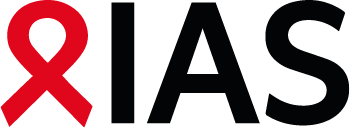Share Abstract
Efficacy and safety of dolutegravir (DTG) in hepatitis (HBV or HCV) co-infected patients: results from the phase 3 program
Abstract Content:
Background: DTG Phase 3 studies enrolled hepatitis virus co-infected patients, an important population of HIV patients.
Methods: Patients enrolled in 4 Phase 3 DTG studies (ART-naïve: SPRING-2, SINGLE, FLAMINGO; ART-exp, INI-naïve: SAILING) were assessed. Atripla (SINGLE), darunavir/ritonavir (DRV/r; FLAMINGO) and raltegravir (RAL; SPRING-2, SAILING) were comparators. HBV surface antigen and HCV antibody was performed at Screening or Day 1. HBV subjects were excluded from SINGLE; local standard of care for HBV was otherwise recommended. An exploratory analysis of proportion without failure (efficacy-related discontinuation=failure [ERDF]) was conducted in order to understand the purely virologic efficacy of DTG in the setting of hepatitis co-infection. Graded liver chemistry (ALT, AST, total bilirubin) abnormalities are presented for subjects with/without viral hepatitis.
Results: 153 DTG and 158 comparator subjects had HBV and/or HCV co-infection. ERDF results for co-infected participants showed comparable or better efficacy with DTG:
[ERDF in HCV/HBV Co-infected vs. Mono-infected]
Post-Baseline-emergent Grade 2-4 liver enzyme toxicities are presented:
[Treatment-emergent, Grade 2-4 Liver Enzymes]
Higher rates of ALT elevations in co-infected, ART-exp DTG subjects occurred concurrently with virologic/immunologic responses, representing more IRIS cases on DTG. Increased bilirubin in ART-naive DTG subjects (3% co-infected, 2% mono-infected) was uncommon but, in ART-exp DTG subjects, was more frequent due to atazanavir (12% in both).
Conclusions: The efficacy/safety profile of DTG in HBV/HCV co-infected subjects was similar to other HIV therapy.
Methods: Patients enrolled in 4 Phase 3 DTG studies (ART-naïve: SPRING-2, SINGLE, FLAMINGO; ART-exp, INI-naïve: SAILING) were assessed. Atripla (SINGLE), darunavir/ritonavir (DRV/r; FLAMINGO) and raltegravir (RAL; SPRING-2, SAILING) were comparators. HBV surface antigen and HCV antibody was performed at Screening or Day 1. HBV subjects were excluded from SINGLE; local standard of care for HBV was otherwise recommended. An exploratory analysis of proportion without failure (efficacy-related discontinuation=failure [ERDF]) was conducted in order to understand the purely virologic efficacy of DTG in the setting of hepatitis co-infection. Graded liver chemistry (ALT, AST, total bilirubin) abnormalities are presented for subjects with/without viral hepatitis.
Results: 153 DTG and 158 comparator subjects had HBV and/or HCV co-infection. ERDF results for co-infected participants showed comparable or better efficacy with DTG:
| SPRING-2 Week 96 | SINGLE Week 96 | FLAMINGO Week 48 | SAILING Week 48 | |||||
| DTG QD N=49 | RAL QD N=43 | DTG QD N=28 | Atripla QD N=30 | DTG QD N=26 | DRV/r QD N=20 | DTG QD N=50 | RAL BID N=65 | |
| HCV+ | 92% | 93% | 95% | 88% | 100% | 100% | 100% | 86% |
| HCV- | 95% | 92% | 93% | 93% | 99% | 99% | 93% | 87% |
| HBV+ | 83% | 88% | N/A | N/A | 100% | 100% | 93% | 81% |
| HBV- | 94% | 92% | N/A | N/A | 99% | 99% | 94% | 87% |
Post-Baseline-emergent Grade 2-4 liver enzyme toxicities are presented:
| HBV and/or HCV Co-Infected | No HBV or HCV Infection | |||||||
| ART-Naive | DTG QD N=103 | RAL BID N=43 | Atripla QD N=30 | DRV/r QD N=20 | DTG QD N=959 | RAL BID N=363 | Atripla QD N=385 | DRV/r QD N=222 |
| ALT n(%) | 17 (17) | 10 (23) | 7 (23) | 2 (10) | 32 (3) | 14 (4) | 17 (4) | 4 (2) |
| AST n(%) | 16 (16) | 6 (14) | 6 (20) | 2 (10) | 42 (4) | 18 (5) | 18 (5) | 7 (3) |
| ART-exp | DTG QD N=50 | RAL N=65 | DTG QD N=289 | RAL BID N=272 | ||||
| ALT n(%) | 11 (22) | 5 (8) | 10 (3) | 9 (3) | ||||
| AST n(%) | 10 (20) | 12 (18) | 8 (3) | 8 (3) | ||||
Higher rates of ALT elevations in co-infected, ART-exp DTG subjects occurred concurrently with virologic/immunologic responses, representing more IRIS cases on DTG. Increased bilirubin in ART-naive DTG subjects (3% co-infected, 2% mono-infected) was uncommon but, in ART-exp DTG subjects, was more frequent due to atazanavir (12% in both).
Conclusions: The efficacy/safety profile of DTG in HBV/HCV co-infected subjects was similar to other HIV therapy.
